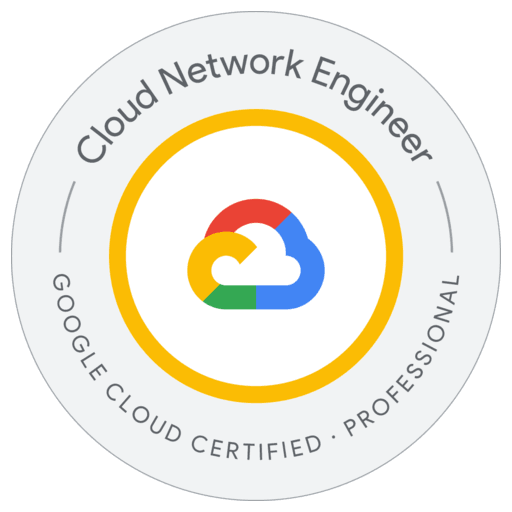

Professional Cloud Network Engineer - Google Cloud Certified Exam Questions
Question 1 Single Choice
Your organization's on-premises network is linked to a VPC through a Cloud VPN tunnel. A static route of 0.0.0.0/0 with the VPN tunnel as its next hop is configured in the VPC, directing all internet-bound traffic through the on-premises network. To enable direct internet access from a specific region's Compute Engine instances within the VPC, Cloud NAT is set up to translate their primary IP addresses. However, the traffic from these instances isn't undergoing address translation as expected. What action should you take?
Question 2 Single Choice
When migrating to Cloud DNS and aiming to import your BIND zone file, which command should you use?
Question 3 Multiple Choice
You are setting up a new instance group that will be used with an HTTP(S) load balancer. As part of this process, you need to define a health check to monitor the status of the backend instances.
Which two approaches can be used to create the required health check? (Choose two.)
Question 4 Single Choice
In your Google Cloud environment, you've implemented a hub-and-spoke architecture using VPC Network Peering to link the spokes to the hub. For security purposes, you've deployed a private Google Kubernetes Engine (GKE) cluster in one of the spoke projects, featuring a private endpoint for the control plane. You've configured authorized networks to include the subnet range where the GKE nodes reside. Despite this, you're unable to access the GKE control plane from other spoke projects. What steps should you take to permit access to the GKE control plane from the other spoke projects?
Question 5 Multiple Choice
Your company has recently acquired Altrat, which is also a Google Cloud (GCP) customer. Each company currently operates in its own GCP organization with a custom DNS solution in place. For the next year, both organizations will retain their existing domains and hostnames until a full architectural review and transition are complete.
Given the following conditions:
Each organization uses Shared VPC to enable full internal connectivity across its own projects.
Both environments utilize the 10.0.0.0/8 IP space, with no prefix overlap between the organizations.
Firewall rules are already configured to allow all traffic to/from 10.0.0.0/8 within each organization.
Bastion hosts and load balancers use public IPs; all other instances are private.
No Cloud Interconnects currently exist in either environment.
You want to integrate the networking and DNS infrastructure of both organizations with minimal downtime and low complexity.
Which two steps should you take to achieve this? (Choose two.)
Question 6 Single Choice
You're part of a multinational corporation transitioning to Google Cloud Platform (GCP), with specific cloud requirements. Here's the situation:
- Your company has on-premises data centers in Oregon and New York, connected to GCP regions us-west1 (primary HQ) and us-east4 (backup) through Dedicated Interconnects.
- There are multiple regional offices in Europe and APAC.
- Regional data processing is needed in europe-west1 and australia-southeast1.
- You have a Centralized Network Administration Team.
- Your security and compliance team needs a virtual inline security appliance for L7 inspection and URL filtering. You aim to deploy this appliance in us-west1.
Which action should you take?
Question 7 Single Choice
Your company operates a single Virtual Private Cloud (VPC) network in Google Cloud, accessible from your on-premises network via Cloud Interconnect. You need to configure access exclusively to Google APIs and services supported by VPC Service Controls through hybrid connectivity, with a service level agreement (SLA) in place. What should you do?
Question 8 Single Choice
Your company has a Virtual Private Cloud (VPC) connected to two different Dedicated Interconnect circuits located in us-west1 and us-east1. Each Interconnect link is associated with its own Cloud Router and VLAN attachment in its respective region.
Your goal is to establish a high availability (HA) routing configuration where:
Under normal conditions, all ingress traffic from the on-premises network should enter Google Cloud via the
us-west1Interconnect.If the
us-west1path becomes unavailable, traffic should automatically fail over to theus-east1Interconnect path.
To implement this preferred traffic flow, how should you configure the Multi-Exit Discriminator (MED) values (base priorities) on the Cloud Routers?
Question 9 Single Choice
Your company has deployed a single VPC network in Google Cloud, which is connected to your on-premises environment via Cloud Interconnect.
A new security policy requires that:
Traffic to Cloud Storage must only traverse the Cloud Interconnect (private path).
All other Google APIs and services should continue to be accessed via the public internet.
You need to configure access appropriately to meet this requirement.
What should you do?
Question 10 Single Choice
As the network administrator overseeing hybrid connectivity at your organization, your developer team seeks to utilize Cloud SQL located in the us-west1 region within your Shared VPC. You've set up a Dedicated Interconnect connection and a Cloud Router in us-west1, and connectivity between your Shared VPC and on-premises data center is operational. After configuring the required private services access connection for Cloud SQL using the reserved IP address range and default settings, your developers are unable to access the Cloud SQL instance from on-premises. How can you resolve this issue?





